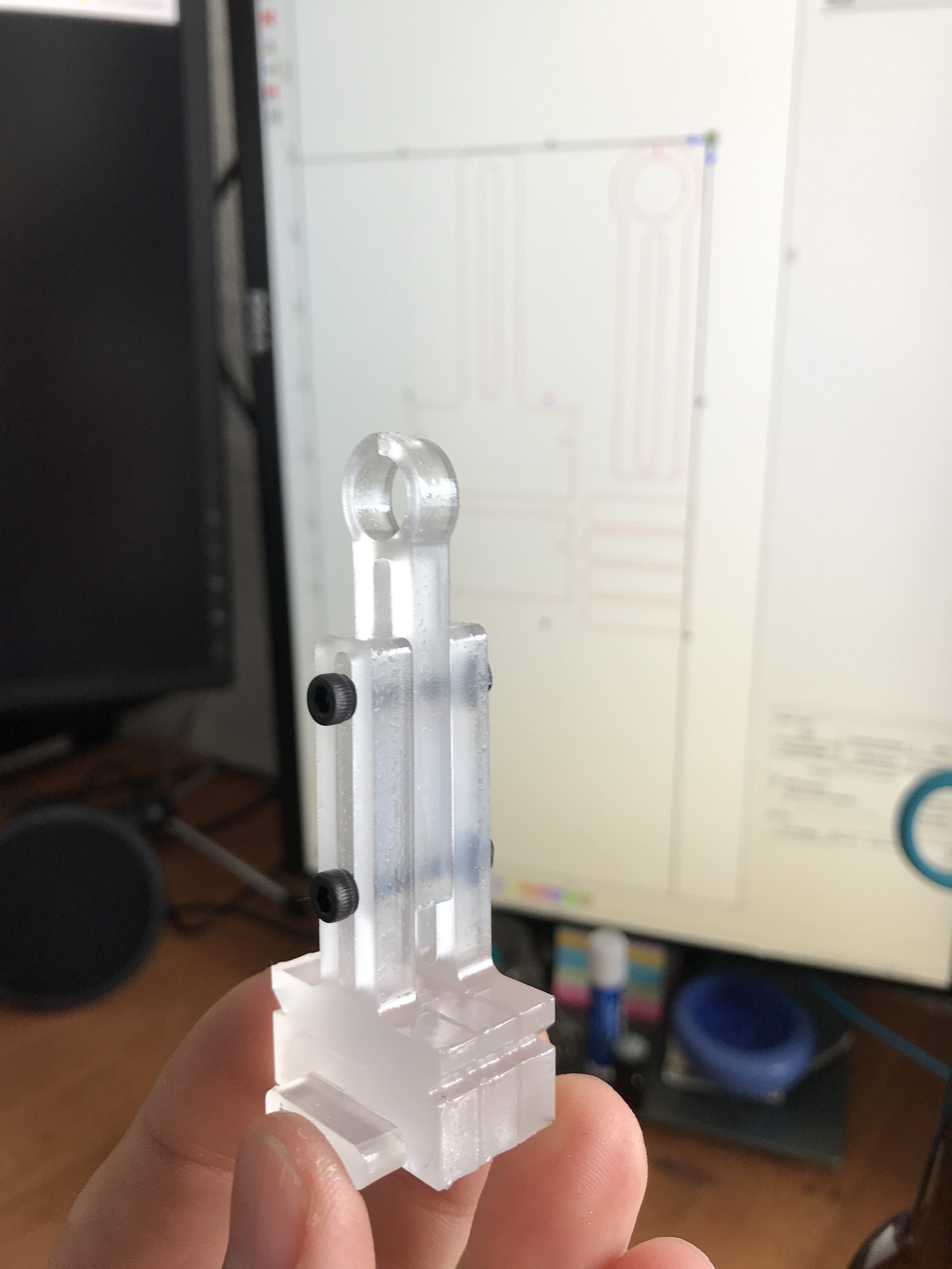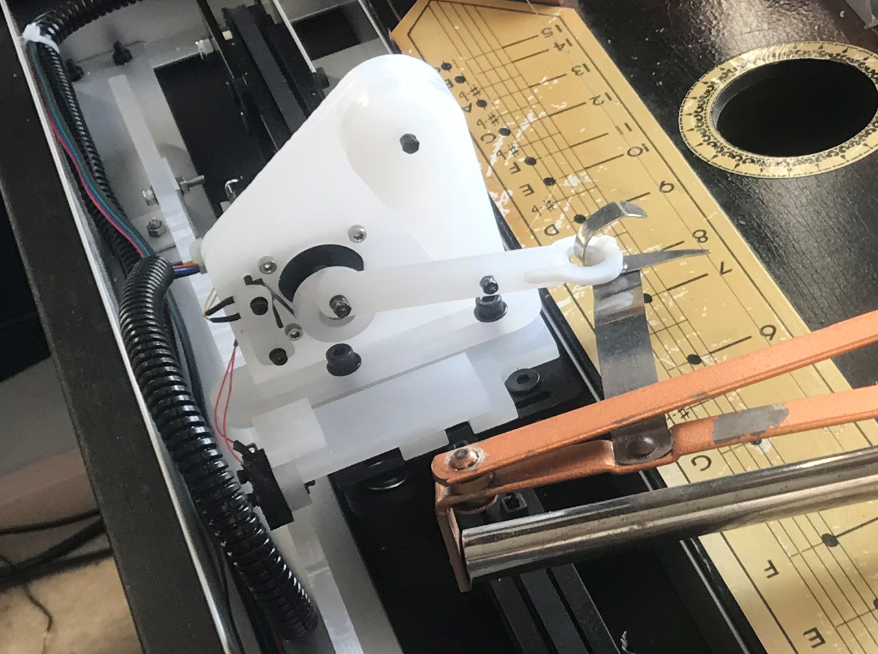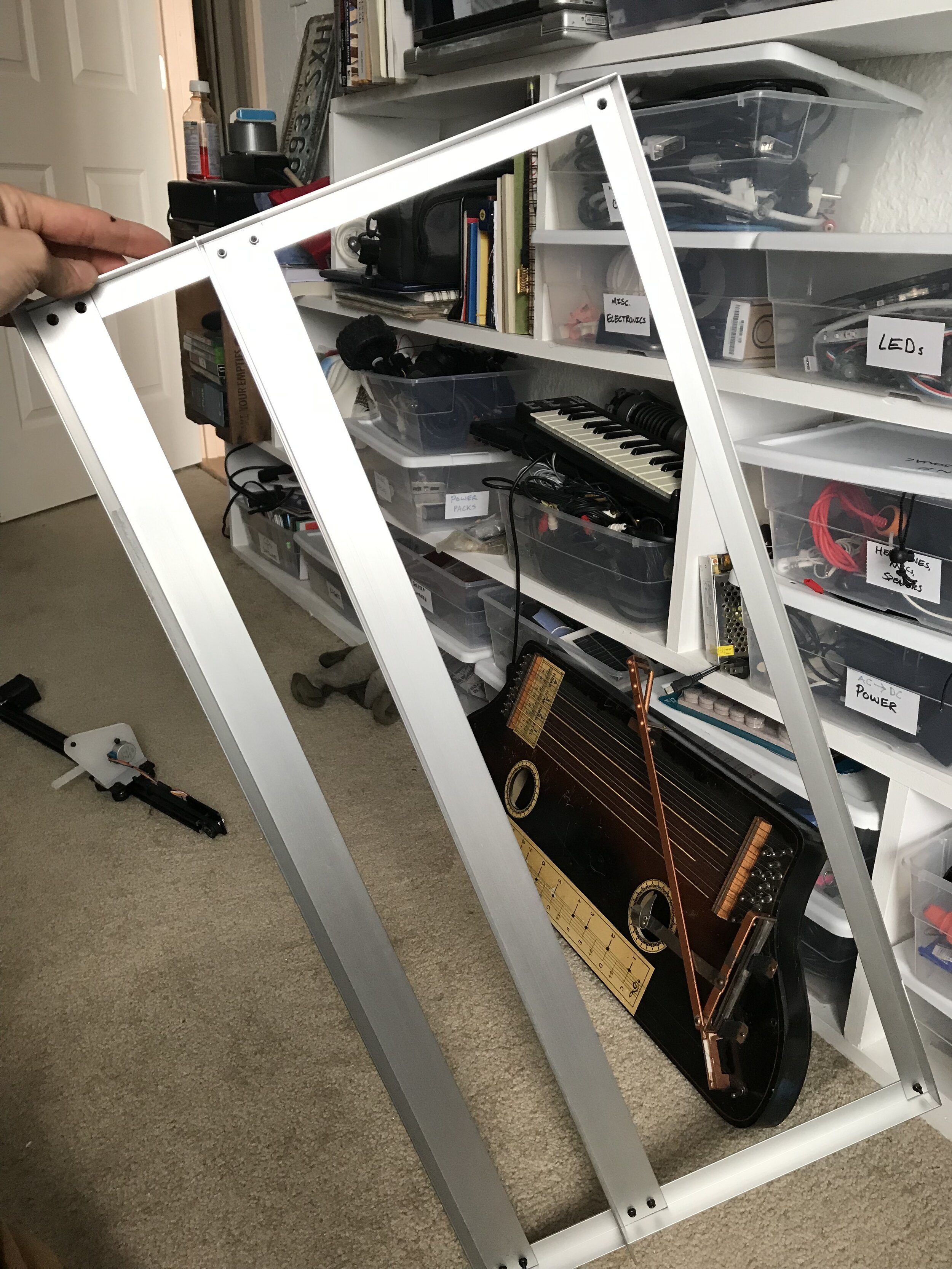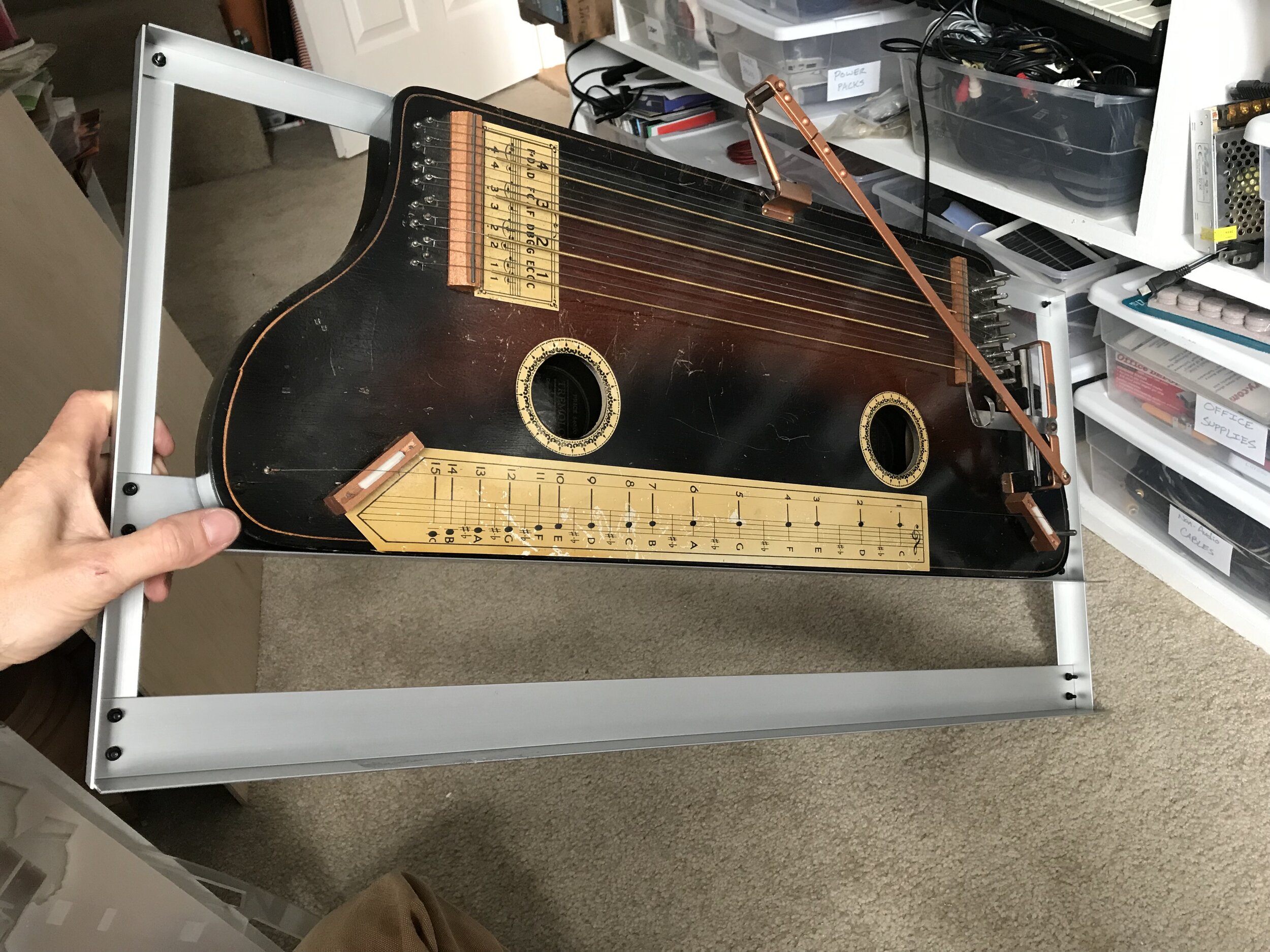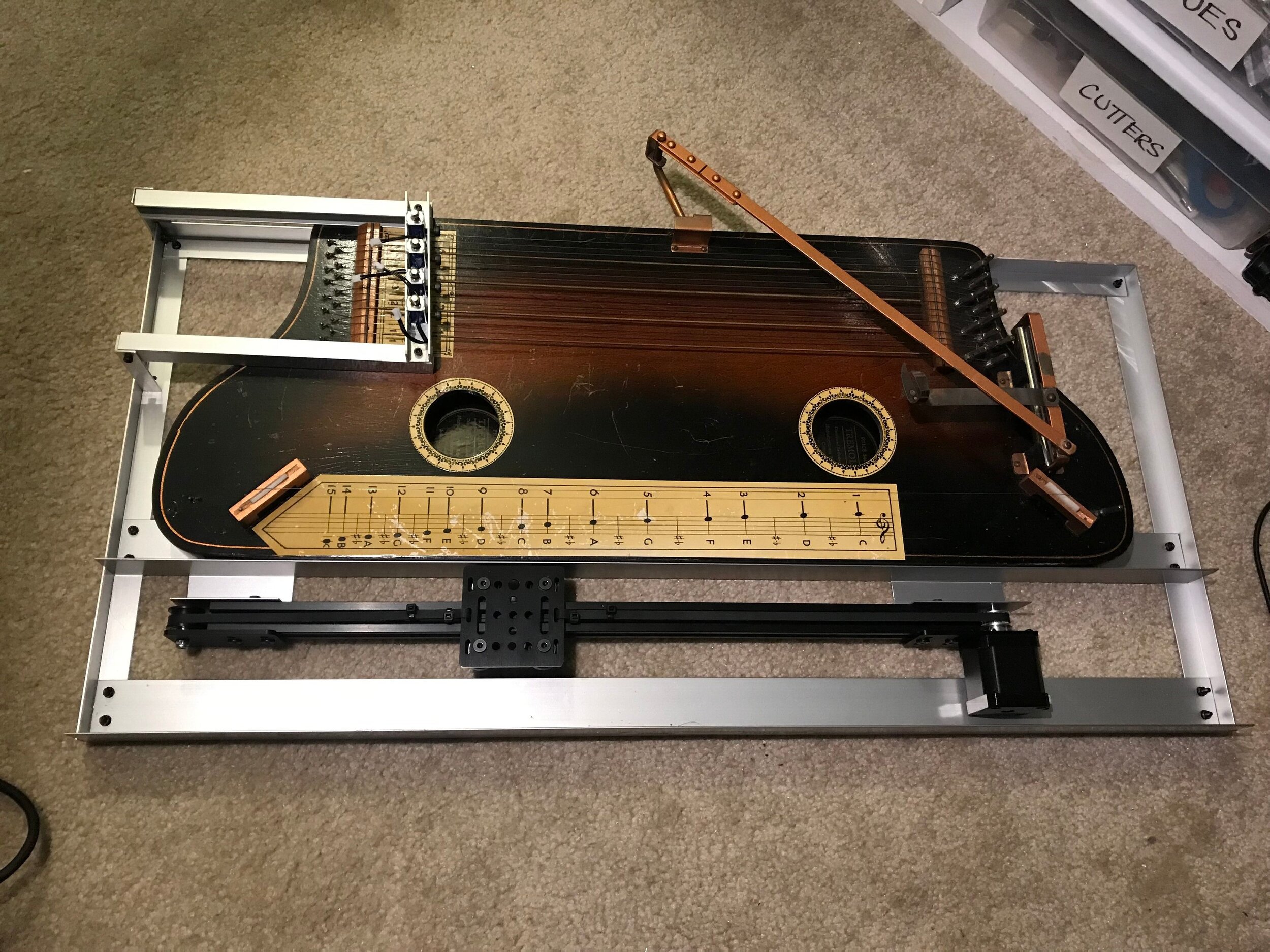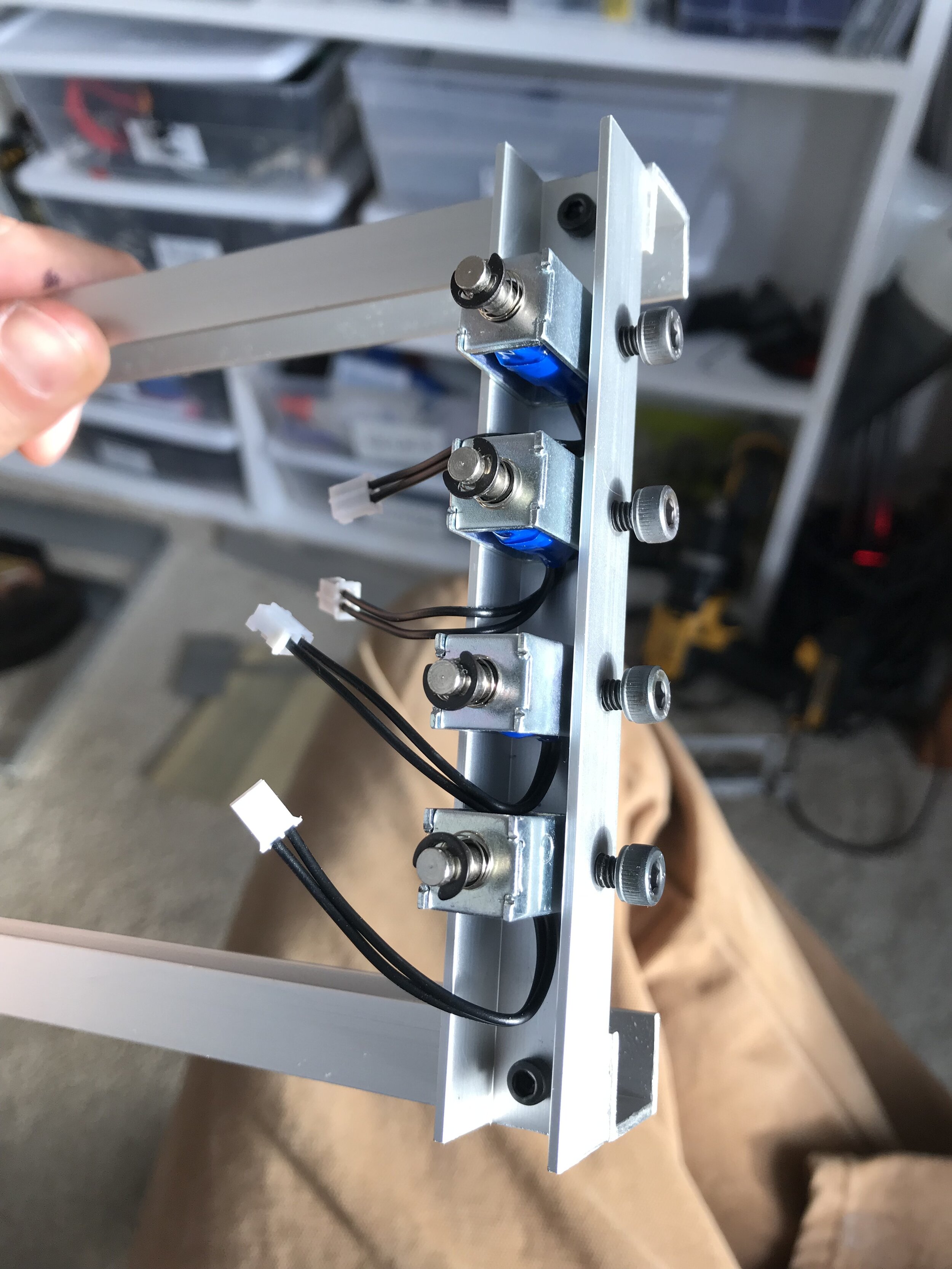Automated Tremoloa
I found this tremoloa by the dumpster, so I took it home and automated it. Everything is currently controlled by an Arduino Nano. The aluminum frame was made from stock material from Home Depot, and the acrylic parts were designed in Fusion 360, then cut with a laser. The chords are played by solenoids, controlled by a relay module. The stepper motor for the plucker is a nema 11 and the drive rail is a nema 17. Position of the rail and plucker are calibrated with limiter switches.
Motivation
As a kid I visited House on the Rock in Wisconsin and was deeply impacted. While some aspects left me with phantasmagorical nightmares for years, the collections of self-playing instruments inspired me. The first couple were a real rush to see, but then I noticed that one of the machines was not in fact producing the sounds I was hearing. It was simply attempting to move some ancient motors and servos while a recorded track played over speakers. This instilled a deep distrust in me and left me wondering for years if it was possible to really create what I thought I was seeing. In the 25 years since that trip to House on the Rock I’ve learned quite a bit about microcontrollers and actuators and now believe more than ever that it is in fact possible to create these magical ensembles.
While emptying my trash a couple years back I saw a black case lying on the ground. I had to check it out, because, you know, it could have been full of money or something. Instead of cash I found an old Tremoloa instrument, which required some google searches to wrap my head around. Rising on a tide of popularity of Hawaiian music during the 1920’s, these instruments were produced in America until the 1950’s. Sad to see an antique head to the landfill, I decided to give this instrument a reason to exist in the 21st century by making it self-playing. One of my major design goals was to not modify or damage the instrument in any way.
Process
The tremoloa is broken into two parts: four fixed cords (C, F, G, and D) comprised of four strings each and a single string that is plucked for the melody. The pick for the melody string is connected to a weighted roller via a flexible metal band, which is all connected to a lever ensuring the roller stays on the string. This produces both tremolo and portamento.
Plucker
I knew the hardest part of my endeavor to automate the tremoloa would be the plucking of the melody string, so I tackled that first. If I couldn’t find a satisfactory solution for this action, the project would go no where. I needed linear movement to get to each note, so I looked at different linear actuators. I finally settled on a product from Amazon that used a NEMA 17 stepper motor, timing belt, pulleys, and a meter long length of v-slot aluminum. It went for the not cheap price of $150. After that purchase I was committed to the project.
With the linear actuator assembled and working with an Arduino Uno, I next prototyped different methods for plucking the string. I had a little two-servo turret lying around that I thought I might use for a Raspberry Pi project. I laser cut some acrylic piece to mount it on the linear actuator and hold the pick of the tremoloa. I quickly found that the holding power of the servos was too weak to move the arm of the tremola and pluck the string with satisfactory force. The servo turret idea was crossed of the list.
Next I looked at a long, inspiring series of YouTube videos by Noah Posner showing different mechanisms that cleverly translate one form of motion into another. This video jumped out at me:
With only the green arm being driven, and just two other arms, a good plucking motion could be created. The tip of the pink arm makes a nice, downward sweeping motion, then quickly rises and moves back to its starting position. I had a cheap 28BYJ-48 stepper motor on hand, so I used Adobe Illustrator to design a mechanism, then laser cut them out of acrylic.
The result was a big improvement over the servo design, but the flimsy arms and weak stepper motor struggled with the lateral forces applied by moving left and right. I ordered a better stepper motor (a 2 phase NEMA 8) and modified my design to add more support to the pivot arms. While I was at it, I engineered in some adjustablity so the whole mechanism could be moved closer or further away from the tremoloa string.
The NEMA 8 would still miss some occasional steps, resulting in it not returning to its starting position after a pluck. This added up to missed notes over time. For a final piece I added a limiter switch, triggered by the the set screw used to mount the acrylic to the motor axle. Instead of telling the motor to “turn enough steps to make one revolution,” I changed the code to say “keep moving the motor until the switch is triggered.”
Frame
I realized I would need a rigid frame to keep the mechanisms in precise positions relative to the instrument. I purchased a variety of stock aluminum parts from Home Depot and assembled a frame with the help of a hack saw and some metric bolts. The tremoloa sits snuggly in the frame, but remains otherwise unmodified (no drilled holes).
Chord Striker
I used 5V solenoids purchased from DigiKey to play the four fixed chords on the tremoloa. Being current greedy, the solenoids are on power source separate from the Arduino. The Arduino triggers relays on a breakout board, which in turn control the current to the solenoids. The solenoids have a narrow plunger on the end, so in order to get them to strike 4 strings at once I epoxied acrylic bars to the end (not visible in the pictures). The plungers go through holes drilled in the aluminum. I first tried to hot glue the solenoids to an angled aluminum bar, but they quickly worked themselves loose, so I then use U-channel with set screws. I made a platform to hold the relays and this eventually became the corner where I mounted all the electronics for the project (motor controllers and Arduino).



